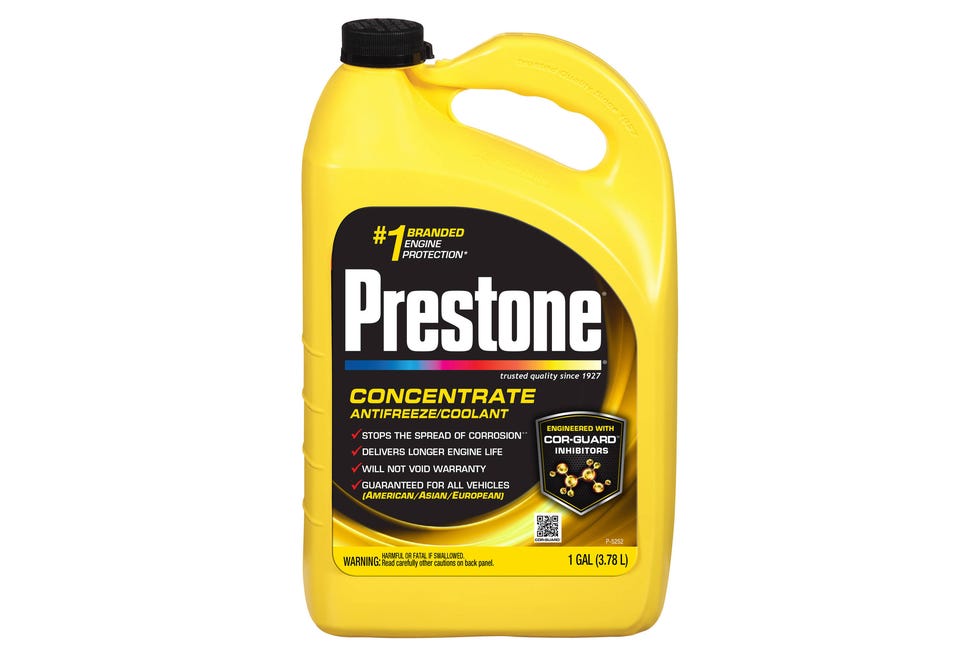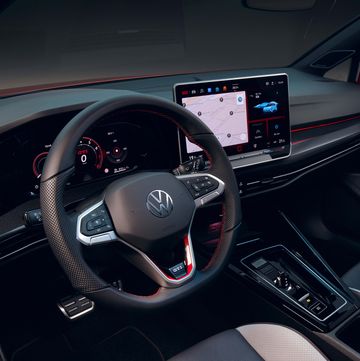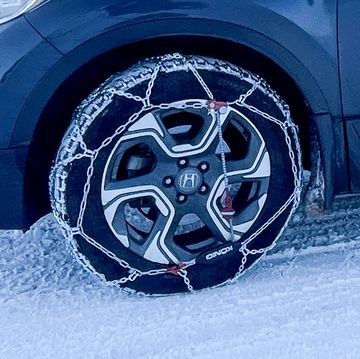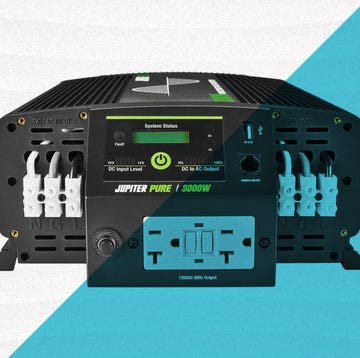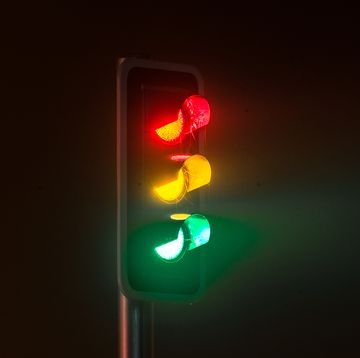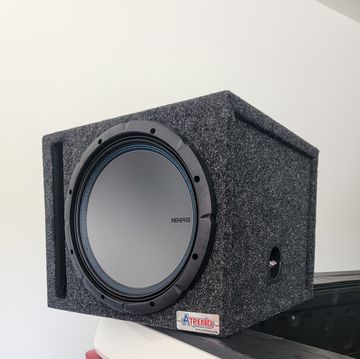1. The interior has developed a rattle.
Likely Cause: A pothole or general wear has shaken parts loose.
Can You Fix It? Yes. Remove the culprit panel and apply Dynamat adhesive sound-deadening material. It’ll add mass, changing the resonant frequency, stopping the rattle.
2. Your garage smells like maple syrup.
Likely Cause: There’s a leak somewhere in your coolant system.
Can You Fix It? Maybe. See if it’s coming from a place you can fix yourself (i.e., a nice, accessible hose). Otherwise, as long as the leak isn’t too ferocious, drive to the mechanic.
3. White exhaust smoke.
Likely Cause: Coolant is entering the combustion chambers.
Can You Fix It? No. This is caused by a blown head gasket, which is as bad as engine problems get. Call AAA. And possibly start shopping for a new car.
4. High-pitched squeal from under the hood.
Likely Cause: The serpentine belt, which drives every important engine part, is slipping.
Can You Fix It? Yes. You can put a new belt on yourself, usually by loosening one component, either a tensioner or the alternator.
5. Wheel squeak that goes away when you brake.
Likely Cause: The wear bars on your worn-out brake pads are making themselves heard.
Can You Fix It? Yes. New brake pads are an easy fix, but you’ll need a few tools. Most crucial: jack stands. Don’t trust your roadside jack to support the car when it’s up for longer than a tire change.
6. The steering wheel is vibrating.
Likely Cause: One of your wheels is out of balance. The question is why.
Can You Fix It? Maybe. If it’s winter, you might have snow or ice inside a wheel, which is easy to knock out. If a weight fell off a rim, go to a tire shop and get the wheel rebalanced.
7. The battery you just replaced is dead. Again.
Likely Cause: A bad charging system means it’s time for a new alternator.
Can You Fix It? Maybe. Beware busted knuckles and the effort required for safe disposal. This is a cheap (and faster) fix for a mechanic.
[Want to print a copy of this whole cheat sheet? Grab the PDF here.]
A Guide to Idiot Lights
Low Tire Pressure
Pay attention. Most tire-pressure-monitoring systems aren’t actually measuring pressure—they’re measuring speed at each tire. So if one doesn’t match the other three, the light comes on. Solution: Add air and look for nails.
Battery
Get thee to a safe spot to call roadside assistance because time is running out. If it’s lit before you start your car, find some jumper cables. Your voltage has probably dipped too low to crank the starter.
Check Engine
Ever been in a cab with a permanently lit check-engine light? It still ran, right? Indeed, the check-engine light isn’t typically going to indicate an ailment that’ll strand you. However, it might pertain to a bad signal from an oxygen sensor or some component of the emissions system. That means you will fail your next inspection. Visit a garage, or check the code yourself with an OBD scan tool.
Cooling System
Does your car have a temperature gauge? Consult that to find out just how hot is hot—a little bit too hot, you can still drive it to wherever you need to go. But if the needle’s pegged to the letter H (or if you just don’t know), shut it down. If you’re desperate to get to where you’re going, turn your heater on full blast. You might be sweaty, but that’s a little less heat in the cooling system.
Traction Control
If this light is flashing intermittently, you’re overcoming the available traction and you might want to back off the gas. Conversely, sometimes you want wheelspin (like if you’re stuck in snow or sand, or entering the burnout box at your local drag strip). In that case, manually disable the system and bring on the squiggles.
Oil Pressure
If this light goes on, pull over immediately and shut off your engine. You don’t want to mess around with this one. Oil starvation foretells imminent engine seizure, which is disastrous at speed. Get a tow truck.
3 Pernicious Car Care Myths
Blow Out the Carbon
Hypothesis: Redlining your engine occasionally helps eject carbon buildup.
Fact: The idea is based on an engine design that hasn’t been used in a century. After explaining this, Thomas Douglas from the Guild of Automotive Restorers says to just let your car get up to operating temperature (usually between 195 and 220 degrees Fahrenheit, which you can hit after just a few minutes of driving) before turning it off. Otherwise, soot that never gets burned off can build up.
Do a Coolant Flush
Hypothesis: You’re changing your oil . . . may as well change your coolant, too. Just because.
Fact: “If your car’s less than ten years old, it was probably filled from the factory with coolant that’s formulated to last 100,000 miles,” says Colin Dilley, vice president of technology for Prestone. That said, coolant is important, because if your car starts running hot, then the oil has lower viscosity and doesn’t lubricate the engine as well. So a creeping engine temperature gauge is your signal to get a flush.
Use the Touchless Car Wash
Hypothesis: Modern automatic car washes won’t hurt your exterior.
Fact: Never mind the unsupervised self-serve bubble brush that might’ve just been used to clean mud off of Grave Digger. Even the fancy automatic washes have their problems. “A lot of car washes use recycled water,” says Stephen Mosca, owner of South County Hand Car Wash in Rhode Island. “Sometimes their towns require it, and they have filters. The problem is salt: Once there’s salt in the water, you can’t filter it out. So you could be washing your car in salt water.”


